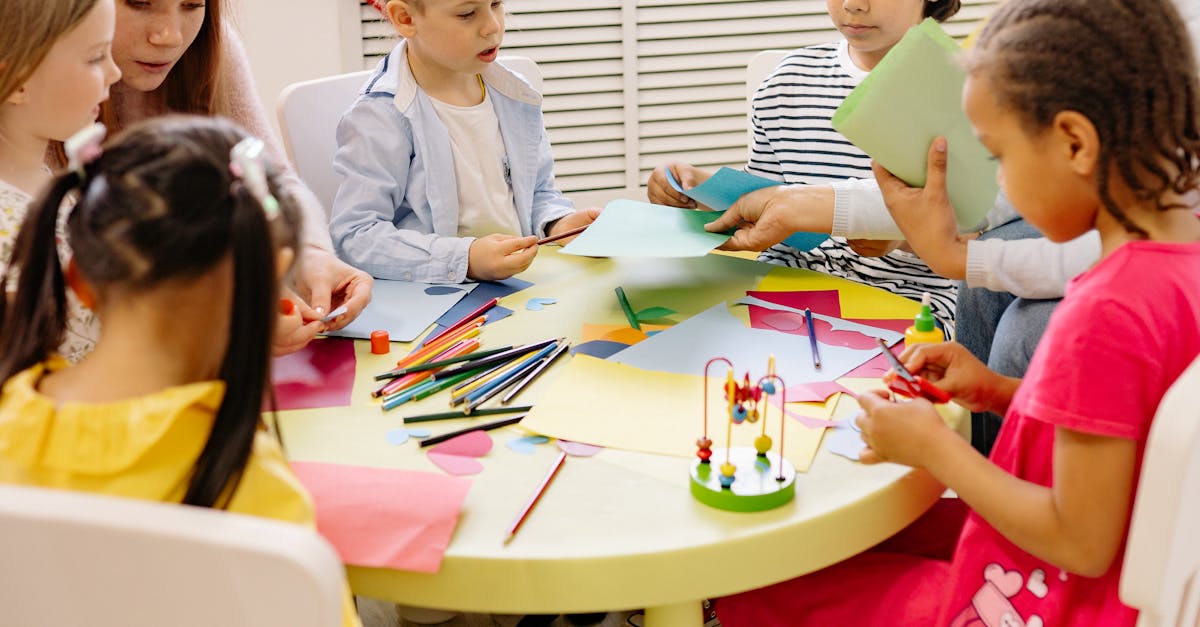In the ever-evolving landscape of education, the flipped classroom model has emerged as a powerful pedagogical approach that challenges traditional teaching methods. This innovative concept reverses the conventional classroom structure, empowering students to take a more active role in their learning process. As educators seek to create engaging and transformative learning environments, the design of a flipped classroom curriculum has become a crucial consideration.
Introduction

The flipped classroom model is a pedagogical approach that inverts the traditional classroom structure. Instead of delivering content during class time, instructors provide students with digital resources, such as pre-recorded lectures or online materials, to be accessed outside of the classroom. This allows class time to be dedicated to interactive activities, collaborative projects, and personalized learning experiences, where students actively engage with the content and apply their knowledge under the guidance of the instructor.
Definition of a Flipped Classroom
A flipped classroom is a pedagogical model that reverses the traditional teaching and learning process. In a flipped classroom, students are responsible for acquiring new knowledge and content before class, often through pre-recorded lectures, online resources, or assigned readings. This frees up class time for active learning, where students can engage in discussions, problem-solving, and hands-on activities with the support of the instructor.
Key Characteristics of a Flipped Classroom
- Pre-class Preparation: Students are expected to engage with course materials, such as videos, readings, or online modules, before attending the class session.
- Active In-class Learning: Class time is devoted to interactive activities, collaborative projects, discussions, and problem-solving exercises that allow students to apply the knowledge they have acquired.
- Instructor Guidance: The instructor acts as a facilitator, guiding and supporting students as they engage with the content and apply their learning during class.
- Personalized Learning: The flipped classroom model enables more personalized learning, as the instructor can address individual needs and provide targeted support during in-class activities.
Advantages of a Flipped Classroom
- Increased Engagement: By shifting the passive content delivery to outside the classroom, students can engage with the material at their own pace and have more opportunities to actively participate in the learning process.
- Personalized Learning: The flipped classroom model allows for more personalized instruction, as the instructor can tailor activities and support to individual student needs during class time.
- Improved Retention: Active engagement and the opportunity to apply knowledge during class time can lead to better retention and deeper understanding of the course content.
- Flexible Learning Environments: Flipped classrooms can provide more flexibility in terms of class time, allowing for a variety of learning activities, such as group work, project-based learning, and one-on-one support.
Benefits of a Flipped Classroom
The flipped classroom model offers numerous benefits for both students and instructors, transforming the learning experience and fostering a more engaging and effective educational environment.
Increased Student Engagement and Participation
In a flipped classroom, students are actively engaged in the learning process, as they are responsible for acquiring new knowledge and content before class. This shift in responsibility encourages students to take a more active role in their learning, leading to increased engagement and participation during in-class activities.
Personalized Learning Opportunities
The flipped classroom model allows instructors to dedicate more class time to personalized learning experiences. By moving the content delivery outside of the classroom, instructors can use in-class time to address individual student needs, provide targeted support, and engage in one-on-one or small-group interactions.
Improved Understanding and Retention
The active learning approach of the flipped classroom can lead to better understanding and retention of course content. By applying their knowledge during in-class activities, students have the opportunity to deepen their understanding and reinforce their learning through practical application.
Flexible Learning Environments
Flipped classrooms offer more flexibility in terms of class time and learning activities. Instructors can dedicate class time to a variety of interactive and collaborative learning experiences, such as group discussions, problem-solving exercises, and hands-on projects, creating a dynamic and engaging learning environment.
Enhanced Collaboration and Peer-to-Peer Learning
The flipped classroom model encourages collaboration and peer-to-peer learning. During in-class activities, students can work together, share ideas, and learn from one another, fostering a supportive and collaborative learning community.
Steps to Design a Flipped Classroom Curriculum
Designing a flipped classroom curriculum requires a thoughtful and methodical approach to ensure a seamless and effective learning experience for students. Here are the key steps to consider:
1. Clearly Define Learning Objectives
The first step in designing a flipped classroom curriculum is to clearly define the learning objectives for the course or module. These objectives should outline the knowledge, skills, and competencies that students are expected to acquire by the end of the learning experience.
2. Identify Appropriate Content and Resources
Once the learning objectives are established, the next step is to identify the appropriate content and resources that will be used to support student learning. This may include pre-recorded lectures, instructional videos, online tutorials, assigned readings, or other digital materials that students can access outside of class.
3. Develop Pre-class Preparation Activities
To ensure that students come to class prepared, it is essential to create engaging and effective pre-class preparation activities. These activities should encourage students to engage with the content, reflect on their understanding, and come to class ready to actively participate.
4. Design In-class Interactive Activities
With the pre-class preparation complete, the next step is to design a variety of interactive and engaging in-class activities. These activities should be designed to reinforce the content, promote critical thinking, and allow students to apply their knowledge in practical and meaningful ways.
5. Implement Formative Assessment Strategies
Ongoing formative assessment is a crucial component of a well-designed flipped classroom curriculum. Implementing a range of assessment strategies, such as quizzes, reflections, or check-in activities, can help instructors monitor student progress and provide timely feedback.
6. Continuously Evaluate and Iterate
Designing a flipped classroom curriculum is an iterative process. Instructors should regularly evaluate the effectiveness of the approach, gather feedback from students, and make necessary adjustments to the curriculum, resources, and activities to ensure an optimal learning experience.
Case Studies of Successful Flipped Classrooms
To better understand the practical implementation of a flipped classroom curriculum, let’s explore a few case studies of successful flipped classroom initiatives.
Case Study 1: Flipped Classroom in a High School Chemistry Course
In a high school chemistry course, the instructor implemented a flipped classroom approach to enhance student engagement and deepen their understanding of the subject matter. Before class, students were assigned to watch pre-recorded video lectures and complete online quizzes to assess their comprehension of the content.
During class time, the instructor divided students into small groups and facilitated a variety of interactive activities, such as collaborative problem-solving exercises, hands-on experiments, and group discussions. This allowed the instructor to provide targeted support and guidance to students as they applied their knowledge and skills.
The implementation of the flipped classroom model resulted in improved student performance, as evidenced by higher exam scores and a deeper understanding of the course material. Additionally, students reported increased engagement and a greater sense of ownership over their learning.
Case Study 2: Flipped Classroom in a University-level Business Course
At a university, a business professor implemented a flipped classroom approach in her upper-level course on strategic management. Before class, students were assigned to read case studies, watch instructional videos, and complete online assessments to ensure they had a solid understanding of the course concepts.
During class time, the instructor facilitated discussions, case analyses, and group presentations, where students could apply the knowledge they had acquired outside of class. This allowed the instructor to provide real-time feedback, address individual student needs, and engage in more in-depth discussions of the course material.
The flipped classroom model in this business course resulted in increased student participation, improved critical thinking skills, and better preparation for the final project and exam. Students reported feeling more engaged and better able to apply the course concepts to real-world business scenarios.
Case Study 3: Flipped Classroom in a Middle School Math Course
In a middle school math course, the instructor implemented a flipped classroom approach to help students develop a stronger foundation in mathematical concepts and problem-solving skills. Before class, students were assigned to watch instructional videos and complete online practice exercises to familiarize themselves with the content.
During class time, the instructor focused on guiding students through collaborative problem-solving activities, small-group discussions, and hands-on explorations of the mathematical concepts. This allowed the instructor to identify and address individual student needs, provide targeted support, and ensure that students were actively engaged in the learning process.
The implementation of the flipped classroom model in this math course led to improved student performance, as evidenced by higher test scores and a greater understanding of the mathematical principles. Additionally, students reported increased confidence in their problem-solving abilities and a more positive attitude towards the subject.
Challenges of Implementing a Flipped Classroom Curriculum
While the flipped classroom model offers numerous benefits, it also presents some challenges that educators must address when designing and implementing a flipped classroom curriculum.
1. Student Engagement and Accountability
Ensuring that students are consistently engaged with the pre-class preparation materials and activities can be a significant challenge. Instructors must find ways to motivate and hold students accountable for their out-of-class learning to ensure that they come to class prepared and ready to participate.
2. Access to Technology and Resources
The flipped classroom model relies heavily on technology, such as access to digital content, online platforms, and devices. Ensuring that all students have equal access to the necessary resources can be a logistical challenge, particularly in educational settings with limited resources or diverse student populations.
3. Faculty Development and Training
Transitioning to a flipped classroom model requires a shift in teaching practices and may necessitate faculty development and training. Instructors must be equipped with the skills and knowledge to effectively design, implement, and manage a flipped classroom curriculum.
4. Resistance to Change
Some students and faculty may be resistant to the flipped classroom model, as it represents a significant departure from traditional teaching and learning approaches. Overcoming this resistance and helping stakeholders understand the benefits of the flipped classroom can be a challenging process.
5. Effective Assessment and Feedback
Designing effective assessment strategies and providing timely feedback in a flipped classroom can be more complex than in a traditional classroom setting. Instructors must find ways to evaluate student learning and provide meaningful feedback that supports the flipped classroom approach.
6. Adapting to Diverse Learning Styles
The flipped classroom model may not be equally effective for all students, as individuals have different learning preferences and needs. Instructors must be prepared to adapt the curriculum and instructional strategies to cater to the diverse learning styles and needs of their students.
Conclusion

Designing a flipped classroom curriculum is a dynamic and multifaceted process that requires careful planning, implementation, and ongoing evaluation. By reversing the traditional classroom structure and empowering students to take a more active role in their learning, the flipped classroom model can foster increased engagement, personalized learning opportunities, and improved understanding and retention of course content.
As educators strive to create engaging and transformative learning experiences, the flipped classroom approach offers a promising solution. By following the steps outlined in this article and addressing the potential challenges, instructors can design and implement a flipped classroom curriculum that meets the diverse needs of their students and prepares them for success in the ever-evolving educational landscape.
